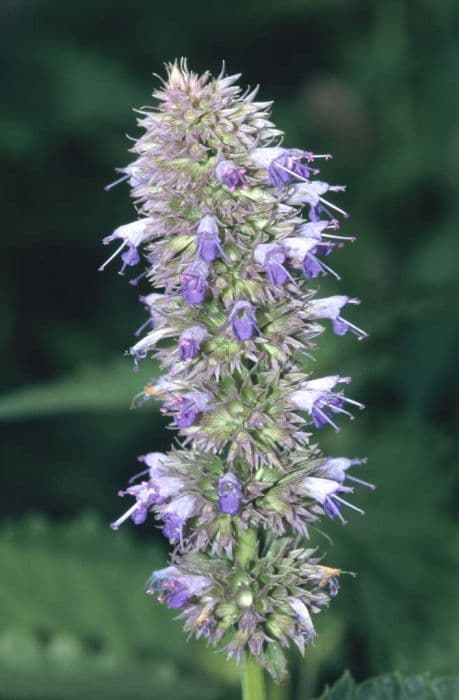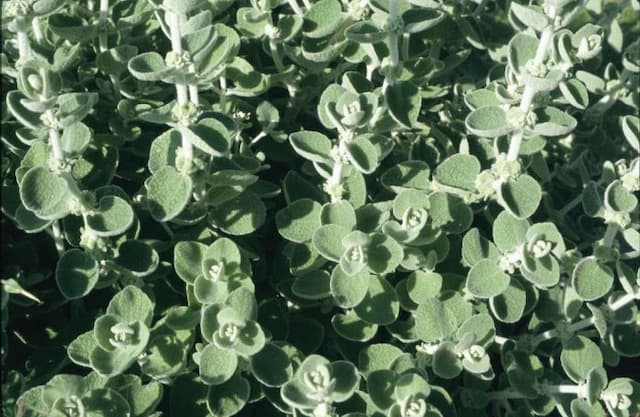Farges harlequin glorybower 'Carnival' Clerodendrum trichotomum var. fargesii 'Carnival' (v)

ABOUT
'Carnival' is a deciduous shrub with fragrant white flowers followed by turquoise berries enclosed in dark red calyces. The variegated foliage is green with a yellow margin when young; margined creamy-white when mature
About this plant
 Names
NamesFamily
Lamiaceae.
Synonyms
Harlequin Glorybower, Variegated Chou Wu Tong, Carnival Clerodendrum.
Common names
Clerodendrum trichotomum f. fargesii, Volkameria fargesii, Clerodendrum trichotomum var. fargesii.
 Characteristics
CharacteristicsLife cycle
Perennials
Foliage type
Deciduous
Color of leaves
Variegated
Flower color
White
Height
10-15 feet (3-4.5 meters)
Spread
6-9 feet (1.8-2.7 meters)
Plant type
Shrub
Hardiness zones
7
Native area
China
Benefits
 General Benefits
General Benefits- Aesthetic Appeal: Harlequin Glorybower 'Carnival' offers vibrant foliage variegation, adding visual interest to gardens and landscapes.
- Habitat Support: Provides nectar for pollinators like butterflies and bees, promoting biodiversity.
- Seasonal Interest: Features a bloom of fragrant flowers in summer and colorful berries in fall, delivering seasonal changes for year-round enjoyment.
- Shade Tolerance: Adapts to partial shade, making it versatile for gardeners dealing with light variability in their garden spaces.
- Drought Resistance: Once established, it exhibits a degree of drought tolerance, reducing the need for frequent watering.
- Privacy Screening: Can be used as a hedge or screen, offering a natural barrier or privacy from neighbors.
- Low Maintenance: Generally requires minimal pruning and care, making it a convenient choice for gardeners of all skill levels.
- Wildlife Attraction: The plant's berries attract birds, providing a food source and encouraging wildlife presence.
- Urban Tolerant: Shows resilience in urban environments, dealing well with the challenges posed by city conditions such as pollution.
- Ornamental Fruit: Produces ornamental blue or black fruit encased in a red calyx that provides a striking contrast and decorative feature.
 Medical Properties
Medical PropertiesThis plant is not used for medical purposes.
 Air-purifying Qualities
Air-purifying QualitiesThis plant is not specifically known for air purifying qualities.
 Other Uses
Other Uses- Ornamental craft material: The colorful leaves of the Harlequin glorybower can be pressed and used for crafting unique bookmarks, greeting cards, or as additions to a botanical collection for ornamental purposes.
- Photography subject: The vibrant foliage and striking flowers make the Harlequin glorybower an excellent subject for botanical photography, aiding photographers in expanding their portfolios with natural imagery.
- Education and research: The various physical traits of the Harlequin glorybower, such as its leaf variegation, can be studied for educational purposes or to further research in the fields of botany and horticulture.
- Theme gardens: This plant can be used as a key element in theme gardens, such as sensory gardens, due to its fragrant flowers and visually appealing leaves.
- Religious and ceremonial use: In some cultures, the Harlequin glorybower might be used in religious or ceremonial decorations, adding natural beauty to festivities.
- Fabric dye: The plant's berries might be explored as a natural dye for fabrics, providing a soft, subtle color for textile art or crafts.
- Musical instrument decoration: Small branches or leaves of the Harlequin glorybower may be incorporated into the design of musical instruments like harps or guitars for an artistic touch.
- Bird attraction: The berries of the plant can attract birds such as robins or thrushes, creating a dynamic and wildlife-friendly garden environment.
- Seasonal celebrations: Its late summer blooms and berries make the Harlequin glorybower suitable for use in decorations for seasonal celebrations and festivals that occur during this time.
- Insect habitat creation: The plant's structure can offer shelter and breeding grounds for beneficial garden insects, enhancing biological diversity in the garden environment.
Interesting Facts
 Feng Shui
Feng ShuiThe Harlequin Glorybower is not used in Feng Shui practice.
 Zodiac Sign Compitability
Zodiac Sign CompitabilityThe Harlequin Glorybower is not used in astrology practice.
 Plant Symbolism
Plant Symbolism- Harlequin Glorybower - This plant is commonly known as Harlequin Glorybower. Its vivid and variegated leaves can symbolize the joy and vibrancy of life, while the fragrant flowers that bloom in late summer could denote unexpected pleasures or rewards.
- Beauty - The showy and fragrant flowers of the Harlequin Glorybower are often associated with natural beauty and aesthetic appreciation, making it a symbol of physical and sensory beauty.
- Resilience - As a robust plant that can thrive in various conditions, Harlequin Glorybower may represent resilience and the ability to adapt to different life situations.
- Transformation - With its changing colors through the seasons, from green foliage to variegated and then bright flowers followed by striking blue fruit, the Harlequin Glorybower embodies transformation and change.
- Balance - The variegated leaves, which often have a mix of green, white, and pink coloring, might symbolize balance and harmony in diversity or within one's life.
 Water
WaterThe Harlequin Glorybower should be watered thoroughly, allowing the top inch of soil to dry out between watering sessions. Depending on the climate and the plant's environment, watering once every week to ten days is usually sufficient. It's best to use a watering can or hose to slowly soak the soil near the base of the plant, avoiding wetting the foliage to reduce the risk of disease. Aim to provide about 1 gallon of water at each watering for a medium-sized plant, adjusting the amount as the plant grows larger or during extreme heat.
 Light
LightThe Harlequin Glorybower prefers bright, indirect sunlight to thrive. An ideal location would be in a spot that receives morning sunlight and dappled shade in the afternoon or a place with light filtered through a sheer curtain. Direct afternoon sun can lead to leaf scorch, so it's best to avoid placing the plant in a western exposure where the sun is most intense.
 Temperature
TemperatureThe Harlequin Glorybower does best in temperatures ranging from 60 to 85 degrees Fahrenheit. It can tolerate a minimum temperature of around 45 degrees Fahrenheit for short periods but sustained exposure to cold can damage the plant. Ideal conditions are warm and consistent, avoiding fluctuations that can stress the plant.
 Pruning
PruningPrune the Harlequin Glorybower to encourage healthy growth, maintain its shape, and remove any dead or diseased branches. The best time to prune is in late winter or early spring before new growth begins. It's not necessary to prune annually, but a light trim every couple of years can rejuvenate the plant and enhance flowering.
 Cleaning
CleaningAs needed
 Soil
SoilHarlequin Glorybower prefers well-draining soil with a high organic content. A mixture of two parts garden soil, one part well-rotted compost, and one part perlite or sand is ideal. The soil pH should be mildly acidic to neutral, ranging from 5.5 to 7.5 for optimal growth.
 Repotting
RepottingHarlequin Glorybower grown in containers should be repotted every 2-3 years or when it has outgrown its current pot. Spring is the best time for repotting to allow the plant to establish in the growing season.
 Humidity & Misting
Humidity & MistingHarlequin Glorybower thrives in moderate to high humidity levels, ideally between 40% to 60%. It can tolerate lower humidity but will benefit from regular misting if the indoor air is too dry.
 Suitable locations
Suitable locationsIndoor
Place in bright, indirect light and ensure good air circulation.
Outdoor
Plant in partial shade with moist, well-drained soil.
Hardiness zone
7-10 USDA
 Life cycle
Life cycleHarlequin Glorybower starts its life as a seed, which requires exposure to cold temperatures through a process called stratification to break down the seed's dormancy and induce germination. Upon germination in the spring, it develops into a seedling, with the initial leaves known as cotyledons supplying energy for the young plant. Throughout the growing season, the seedling matures into a bushy, deciduous shrub, showcasing its ovate, variegated leaves that are green with white margins and splashes of pink. Harlequin Glorybower reaches reproductive maturity in a few years, producing fragrant, white flowers in late summer to fall, which are attractive to pollinators and followed by turquoise blue fruits held in red calyces. After flowering and fruiting, the plant goes into dormancy during the winter, shedding leaves in response to the colder temperatures and reduced daylight. This annual cycle repeats, with the plant potentially reaching a lifespan of several decades under optimal growing conditions.
 Propogation
PropogationPropogation time
Spring to Early Summer
The Harlequin Glorybower is typically propagated through semi-hardwood cuttings. This is a process where cuttings are taken in summer when the new growth has partially matured but is not completely woody. A 4 to 6 inch cutting should be snipped just below a node, and the lower leaves should be removed. The cut end is often dipped in rooting hormone to encourage root development and then inserted into a potting mix. High humidity and warmth are maintained to help the cuttings root, which usually occurs within a few weeks to a couple of months. Once rooted, the cuttings can be potted up individually and grown on before planting out.









